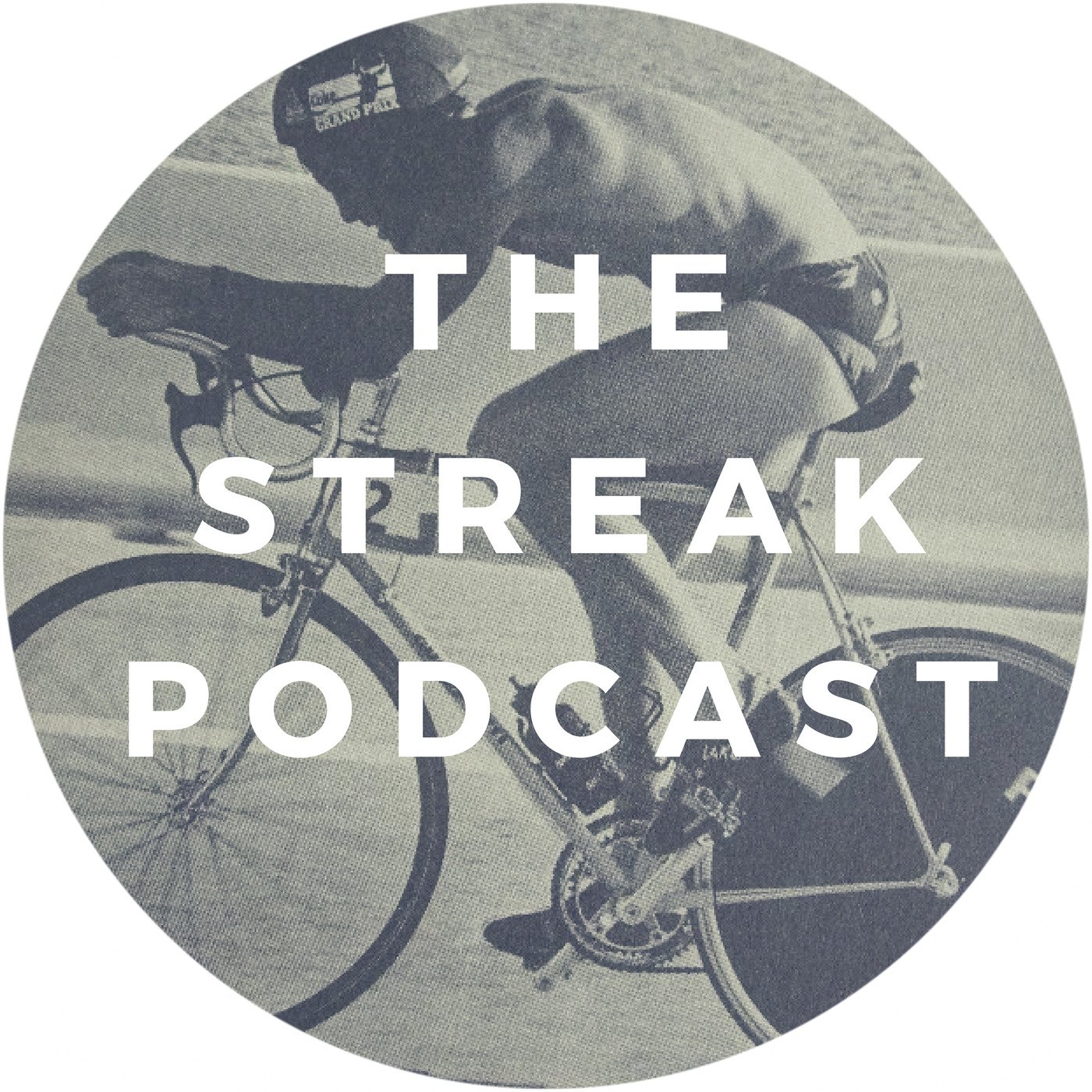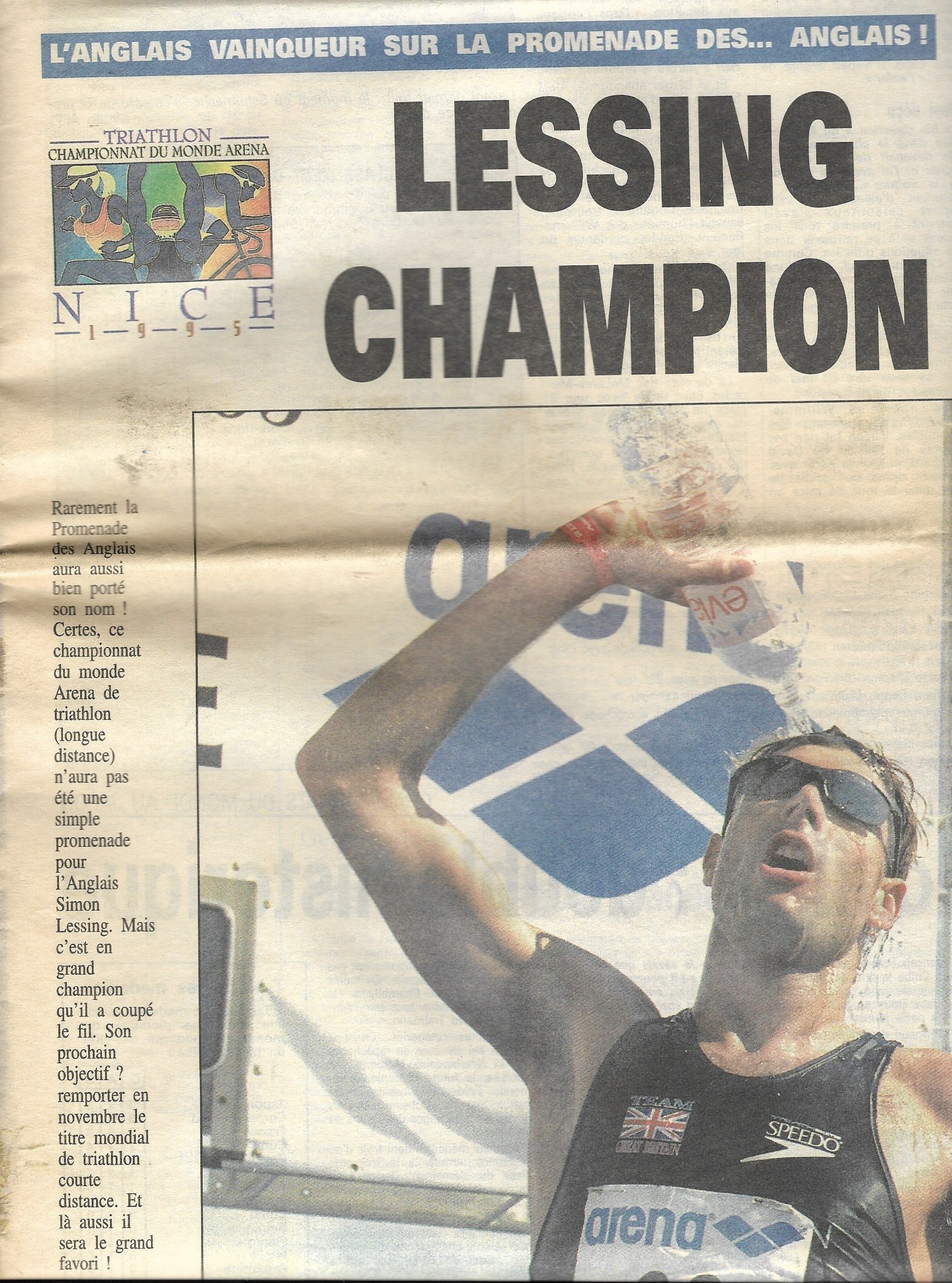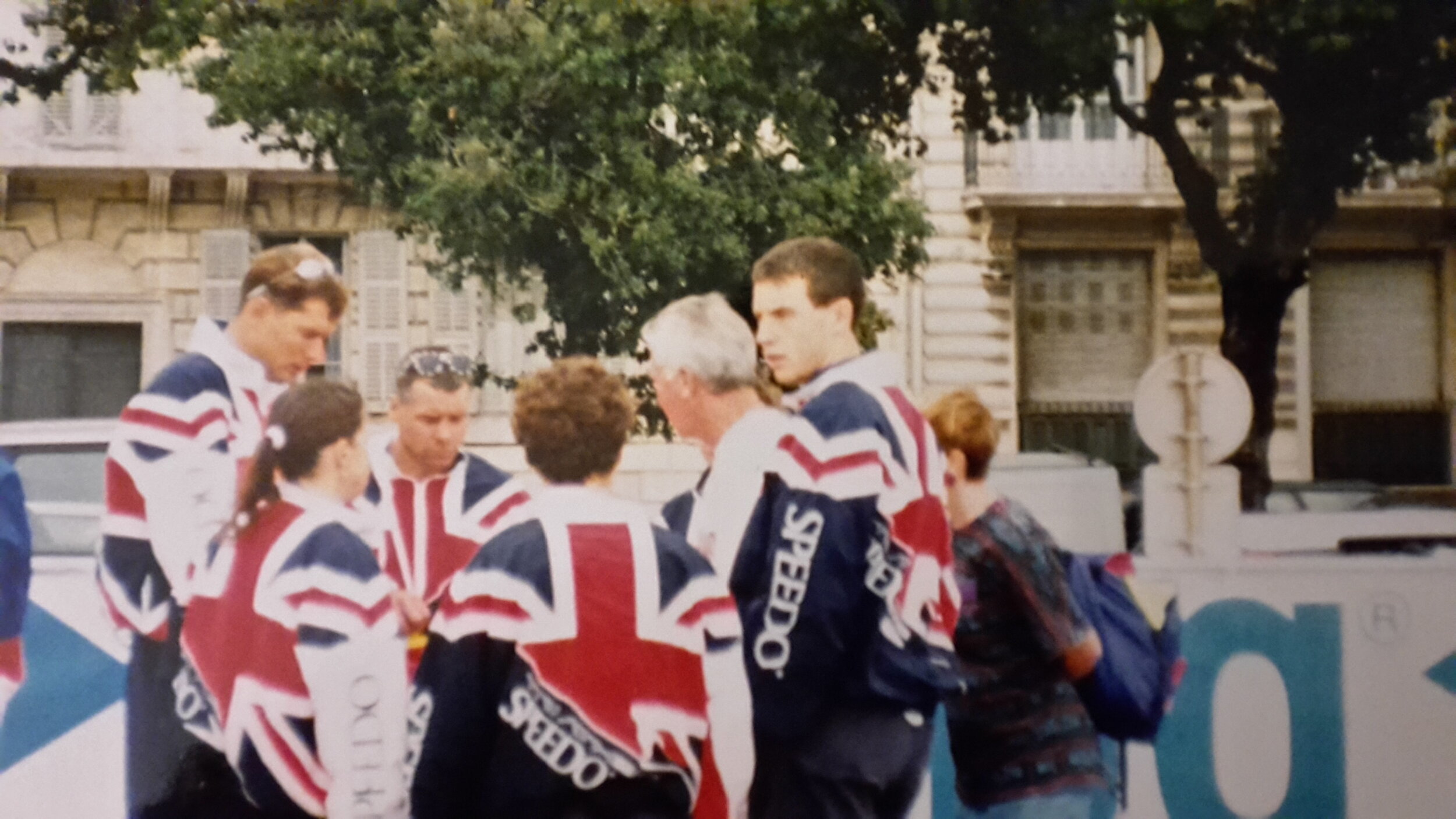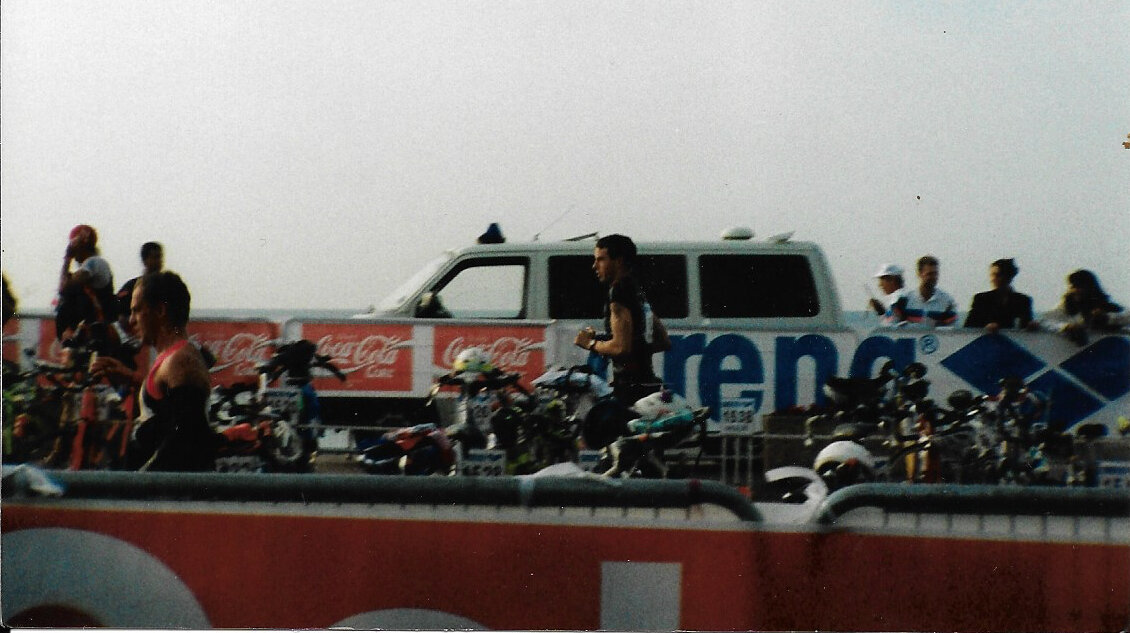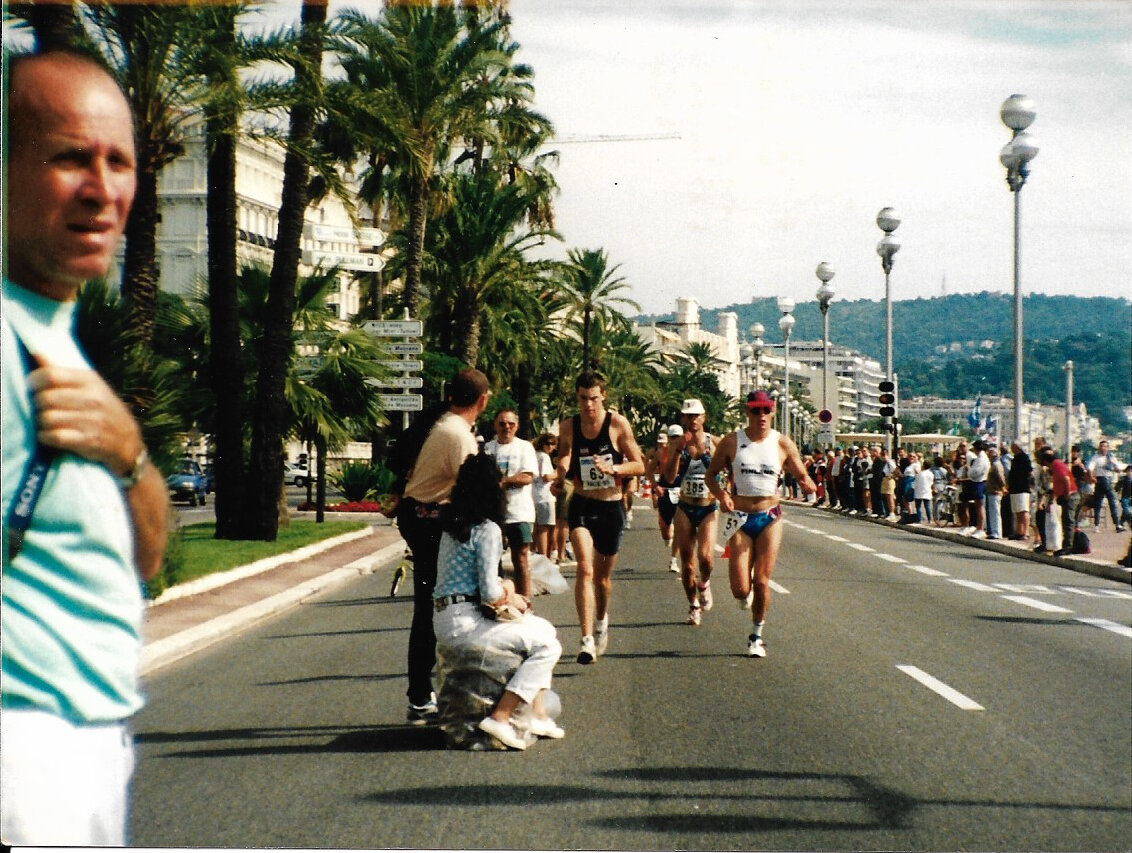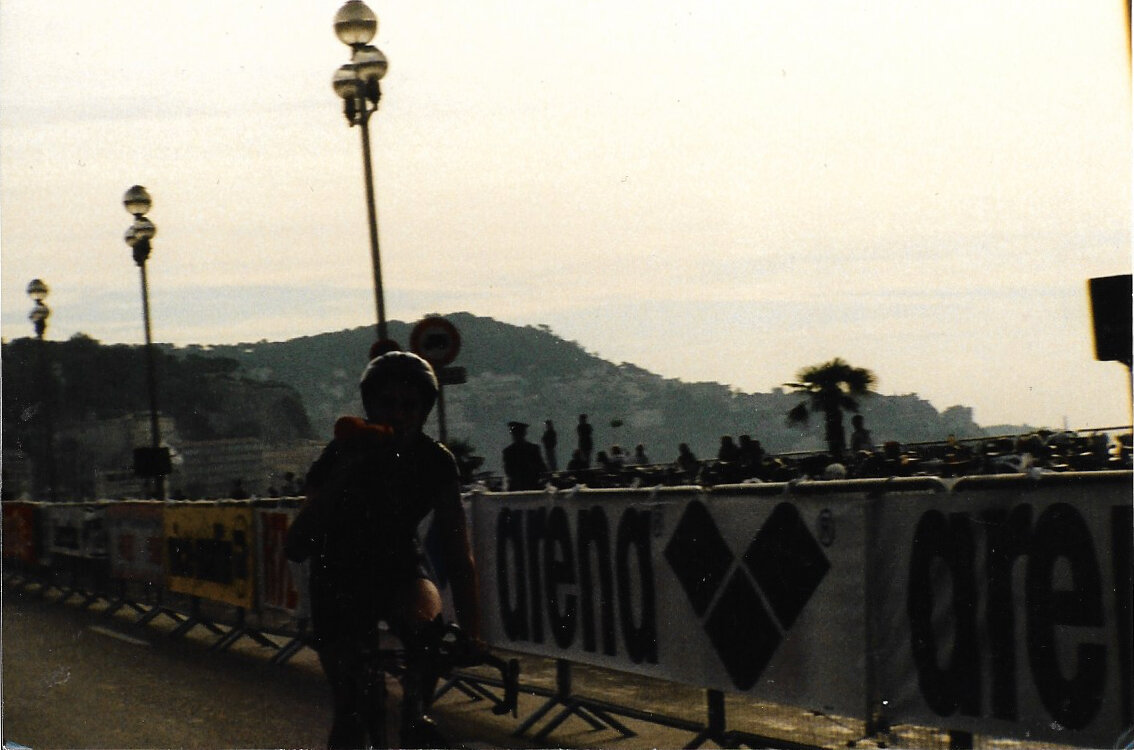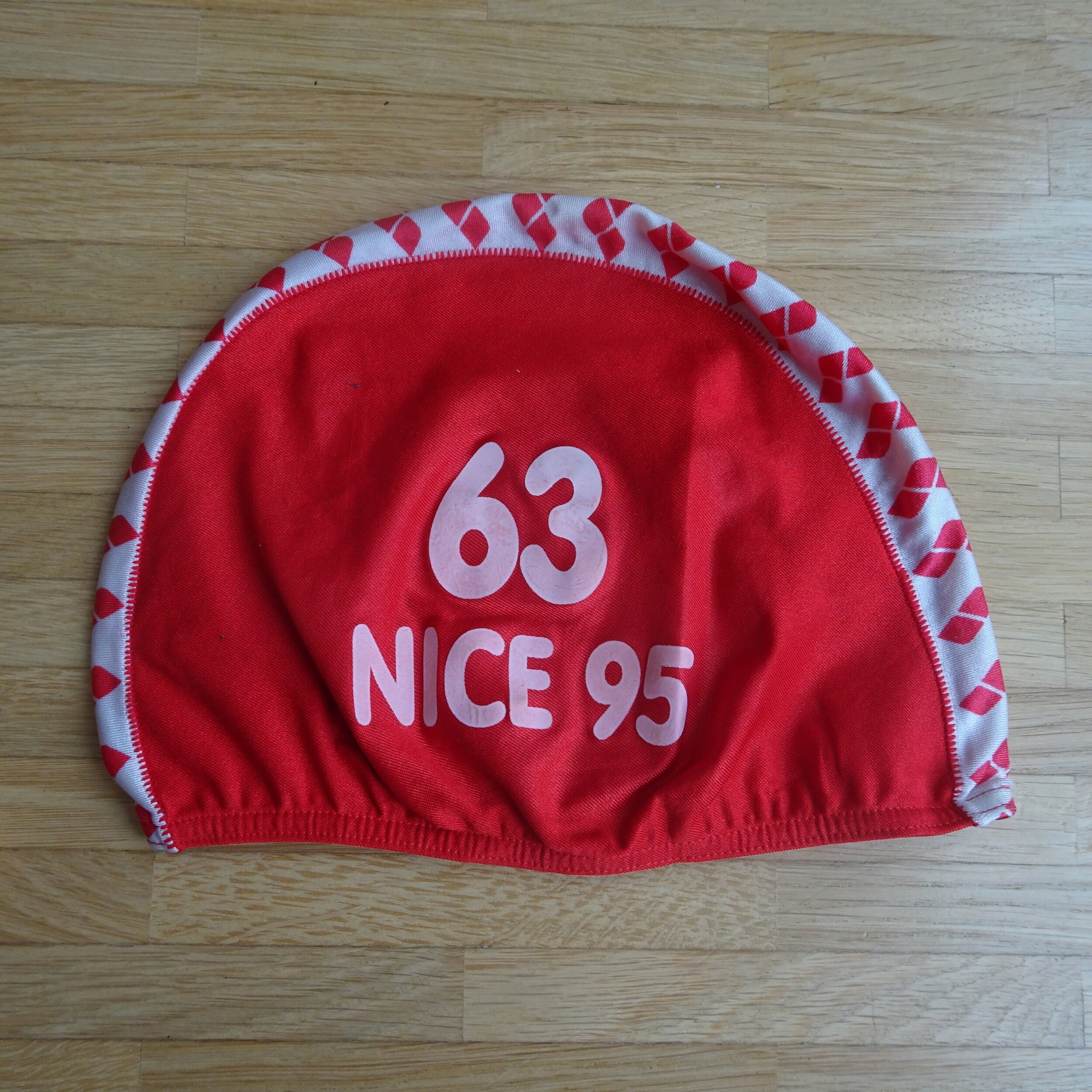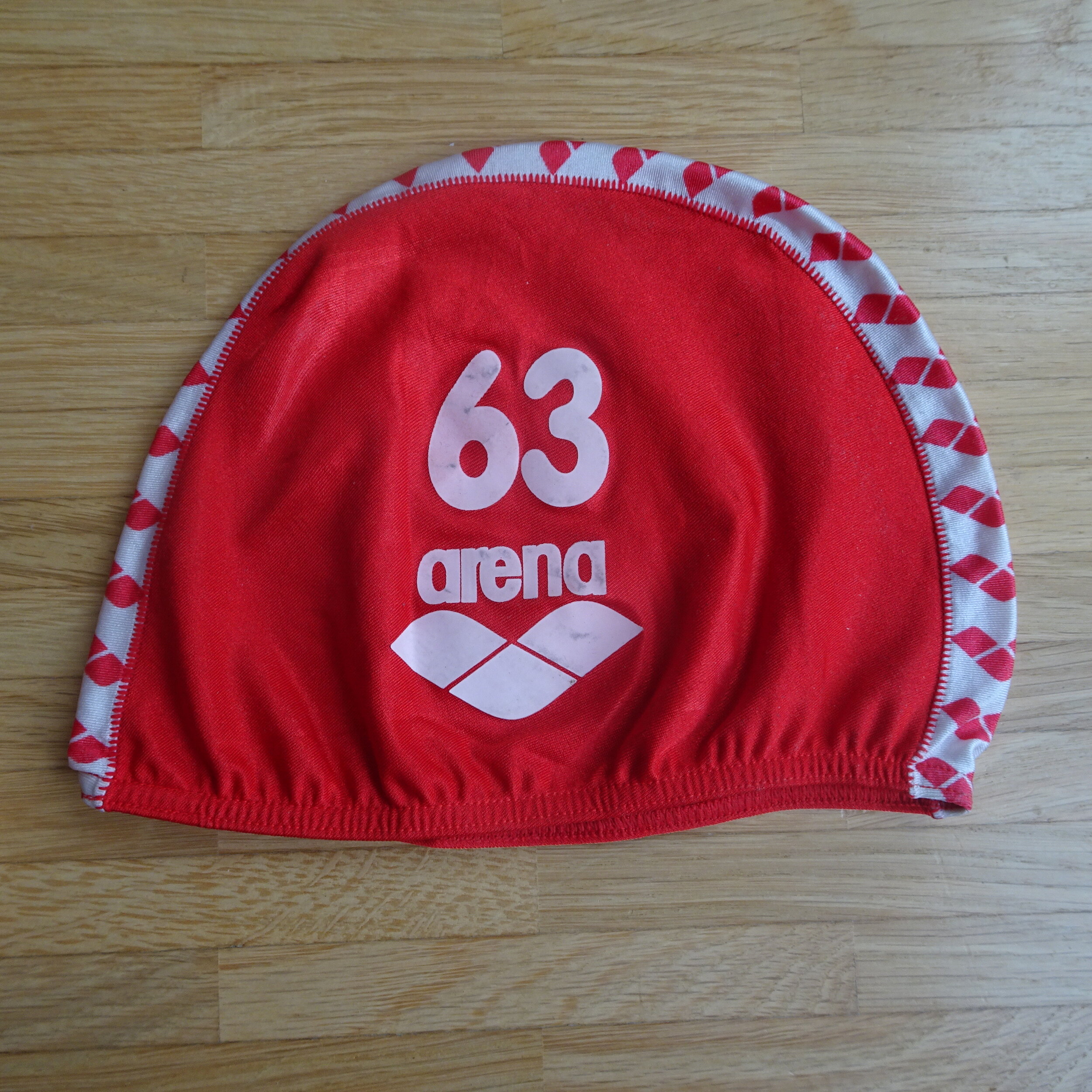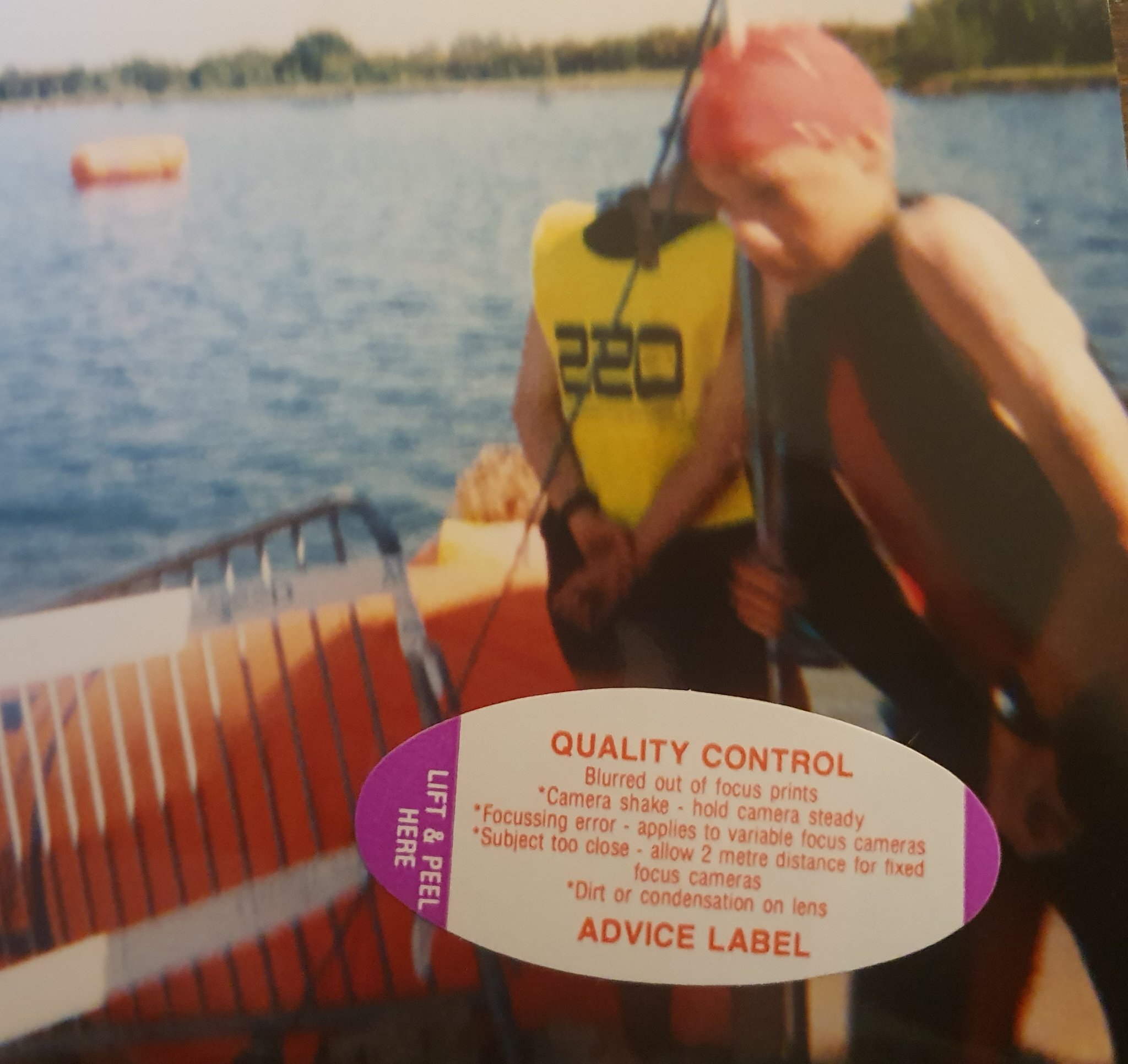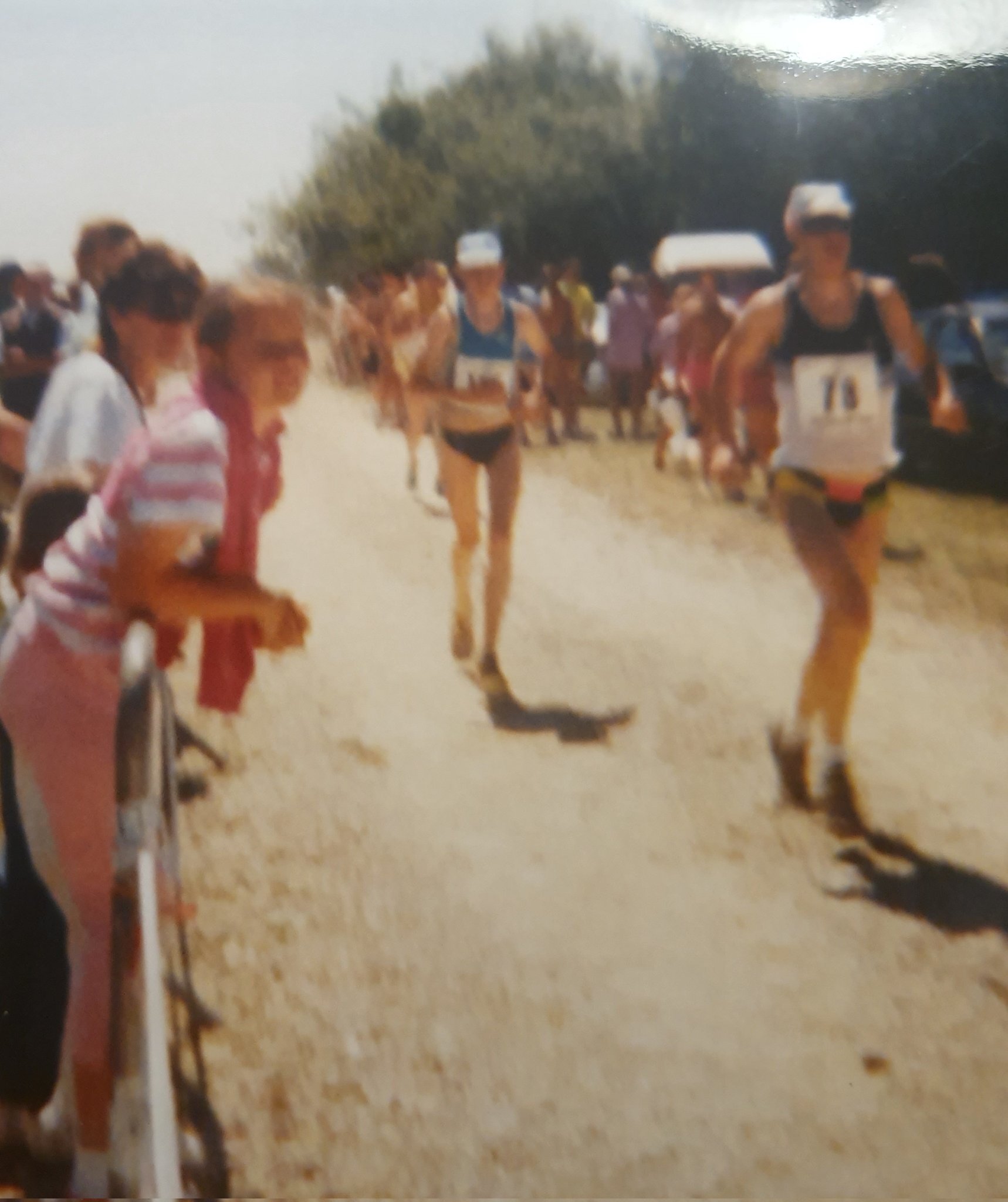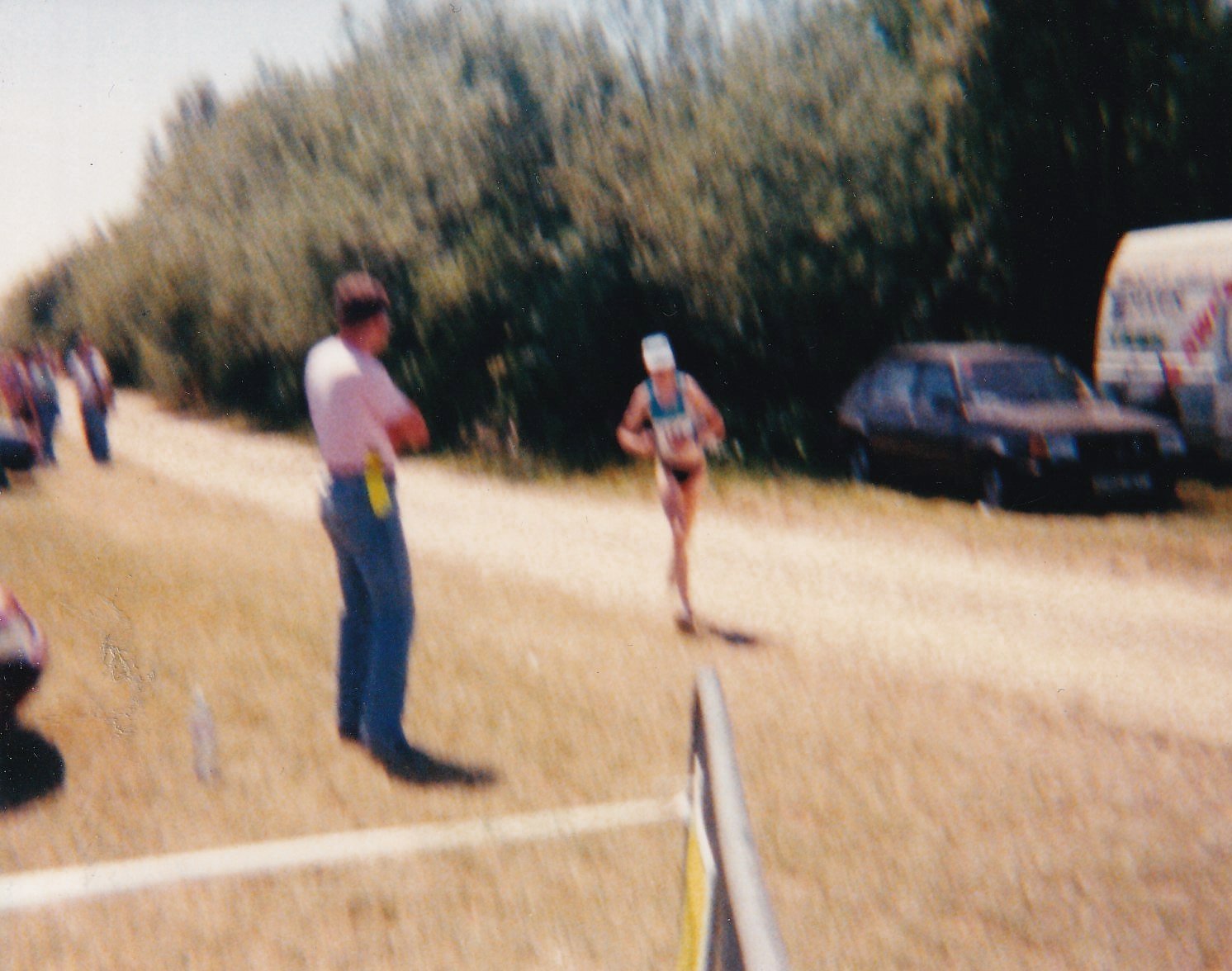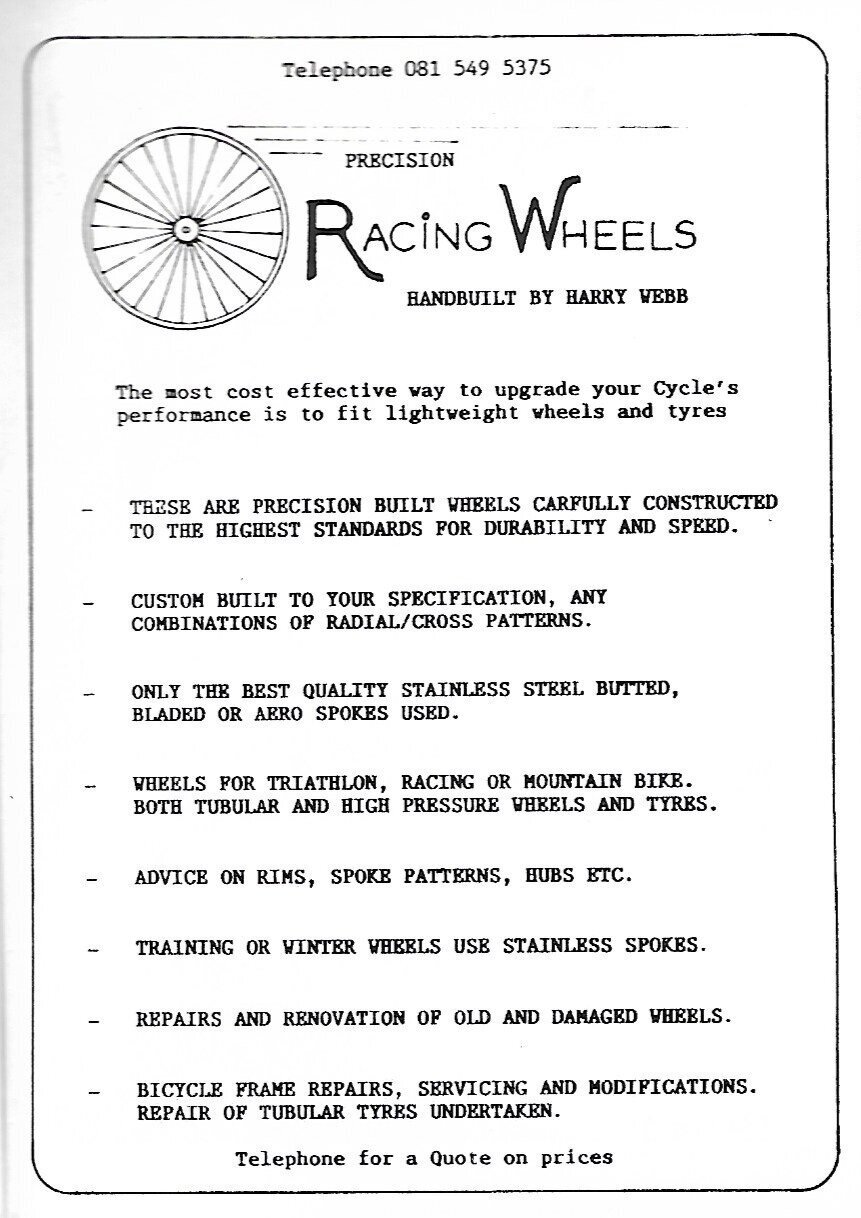1995 Nice Triathlon
After a solid domestic season I was selected for the GB Elite Team for the 1995 ITU World Long Distance Championships in Nice.
It was the second ITU World Long Distance Championships. The first one was also held in Nice the year before. In June. The weather was not ideal. But Isabelle Mouthon and Rob Barel were the winners.
The distances were 4km/120km/30km. These were the semi-pro days. So I paid for my flight and accommodation and the British Triathlon Association paid for the race uniform, the tracksuit and the entry fee.
Images:
Nice Matin Magazine Sports (FR) Lundi 2 Octobre 1995
The Guardian (UK) Monday 2nd October 1995
I flew out on Thursday. Shared a rental car to view the course. And then just went gun to tape as best as I could. I swam with the second big group. Back then the course was one lap and went waaaay out to sea.
I climbed strong and enjoyed the long, gentle slopes and the loud support through the villages. Totally different to anything I’d ever done before. I also don’t recall being too worried by the twisty, dusty descents.
I had a solid run and kept truckin’ at just over four minute kays. Simon Lessing won and Alan Ingarfield passed me on the way back into town. The last five-kay were tough but I got 79th overall and third Brit.
The report in 220 said, “Muir was the next Brit to finish (after Lessing and Ingarfield) doing a good job in his first race over such a distance:”
I spent a large part of the day back and forth with women’s winner Jenny Rose. She was super-strong on the French scene and the World Cup circuit at the time. 2nd was Ute Schafer, who I still see at local races now. Ines Estedt was 3rd but came back and won the following year.
Note that Luc Van Lierde in 2nd and Peter Reid in 3rd have 5 Ironman titles between them. IMO if Simon had concentrated on long distance after 1995. And not been seduced by the Olympics. He’d have won 6-8 times in Kona.
Images: 220 (UK) November 1995
The photos below were taken by Linda Walsh. Her husband, Steve, was racing and he regaled me pre-race with tales of the manic beach start, the Alpes Maritime climbs, the sketchy descents and the shade-free run.
He also gave me this important race-tip: After the run turn-around, don’t look up. Don't look into the distance around the bay to see how far away the finish is. Your head and legs will buckle.
The report from Tri-Athlete France is below. Their defending champion, Isabelle Mouthon, was not in Nice as she was racing Hawaii. Top male athlete was Philippe Methion. I was a big fan. As he could do everything. Short. Long. Middle. Although he was never that well known internationally.
With Methion (4th), Lacaze (6th) and Cordier (7th) France easily won the Men’s Team Competition. World Triathlon really needs to bring this back. It might create a new dynamic in often boring draft-legal races.
Images: Tri-Athlete (FR) Novembre 1995
Of course, Eurosport covered the race. They’d started creating triathlon highlight shows in maybe 1992. Before that you had to a wait a month or so for 220 or Tri-Athlete to come out in order to understand the racing. In this one I make a brief appearance at the 1:26 mark.
I went back to Nice in 1996. It was the European Club Championships. I was racing for GT Vesoul 70. I believe, like Hawaii, Nice is integral to triathlon history and should be on every triathletes bucket-list. I need to do a full Nice history blog post or podcast in the future.
But essentially the race was run by IMG from 1982 until 1993. Then FFTRI from 1994 until 2003. In 2004 it was taken over by Ironman and their local organisers, Triangle, owned by Nice legend Yves Cordier.
The distances were changed to 3.8km/180km/42km and, of course, the men’s Ironman World Championships will be held in Nice in 2023.
I miss plenty of things about the old Nice race. The distance. Riding to your rack. And Mark Allen’s glorious mullet. But these baggy, lycra swimming hats live on in my triathlon archive.
Roth: A Trip. Some History. And The 1988 Race.
Here’s another video I made. Below. And on YouTube. Filmed on a short bike trip to Roth. And some history about the event.
I need to make a correction to something in the video. I said that Glenn Cook first used Scott DH bars in Roth on 20th June 1987.
In fact, he’d used them at Avignon on 7th June and maybe even four weeks earlier at Les Mureaux, near Paris, on 8th May.
I did Roth in 2008. It rained the whole day. But I’d done enough panic training to enjoy the experience. I’ll be there again in 2023. Doing a pool-sprint on Friday. Coaching the boys on Saturday. And cheering @oldtriathlonstuff during the Big Dance on Sunday.
The event was started in 1984 by Detlef Kuhnel. The distances were 700m / 40km / 10km. In October 1982 Kuhnel and Manuel Debus were the first Germans to take part in the Hawaii Ironman. In 1985 Roth was the Bavarian Championships. And in 1986 Roth hosted the German Middle Distance Championships. Scott Tinley even took part!
1988 was the first year as Ironman Europe. Valerie Silk of Ironman had attended the European Middle Distance Championships in Roth in July 1987. And had been impressed with the organisation.
The 1988 races were won by Sarah Coope and Glenn Cook. Results here and a race report here.
The first branded Ironman events outside of Kona were Los Angeles (1983), New Zealand (1985), Japan (1985) and Canada (1986).
Ironman Europe moved to Frankfurt in 2002. And the Roth race became Challenge Roth.
The winners in 1988 were Rita Keiteman and Axel Koenders. Koenders recorded the fastest ironman time ever up to that point with 8:13:11.
Enjoy the images from Tri-Athlete (FR) below. But the article is also really good. About when taking part in a triathlon abroad was definitely an adventure into the unknown. Paper entry forms, money orders and road atlases. I’ll do a full-translation soon.
The shorter English version from Tri-Athlete (UK) is underneath. I’ve also got some back-story about Koenders’ bike. With all the fairings. I’ll find what I’m looking for and post it below ASAP.
I’m very disappointed that neither article mentions Axel Koender’s running with a Sony Sports Walkman clipped to his trunks.
Images:
Tri-Athlete (FR) Septembre 1988
Tri-Athlete (UK) Oct-Nov 1988
In 1989 the race was held over the middle distance. After a deal was done between Ironman and the ETU. So as not to draw athletes away from the European Long Distance Championships being held in Rodekro, Denmark.
Here’s a report from Roth in 1989. And one from Rodekro.
220 Marathon Triathlon 1991
In 1990 the team at 220 Magazine organised an ironman in Cirencester.
In December 1989 Valerie Silk had sold THE ironman to David Voth and James Gills for $3,000,000. They called their new venture the World Triathlon Corporation. As they could have been in a litigious mood, 220 called their event the 220 Marathon Triathlon. I wrote about it here.
There was also some discussion as to whether the 220 race was the first ironman distance race in the UK. Events had been held at Peterborough in 1984 and Tallington Lakes in 1985. But according to most of the Old School Triathlon (1970's, 80s & 90's) Facebook group, one or more of the disciplines at both races were somewhat short.
In 1991 the 220 Marathon Triathlon was moved to Ironbridge. And the organisers had cut a deal with WTC to have 20 Kona qualifying places on offer. This was huge in British triathlon at the time as there were only 19 other venues worldwide in which to qualify.
Before 1991 the nearest qualifying race to the UK was Ironman Europe in Roth. And the British ironman distance records stood at 9:33 by Sarah Coope in Rodekro in 1989 and 9:05 by Nick Kinsey at Roth in 1990.
Images: 220 (UK) March / April 1991
At the end of 1990 Mark Allen and Julie Moss came to Telford to give a triathlon seminar. They also visited Ironbridge to help promote the event.
Sarah Springman and Lucien Loijens won and the event was an organisational success; enjoyed by competitors and spectators. Setting up Ironbridge as possibly the capital of UK triathlon in the 1990s.
Images: 220 (UK) August 1991
Swindon 1990: My First Olympic Distance Triathlon
TSP2 is about the 1989 season. My first in the sport. My plan for 1990 was to take my Skoda Estelle on tour and follow the Carlsberg (formerly Le Coq Sportif) Grand Prix circuit.
In the winter of 1989 the British Triathlon Association announced a more compact Grand Prix with 5 races over 7 weeks in June and July.
The BTA’s plan was to take advantage of the mid-summer weather and consistently attract more top athletes; as the races would also be used for national team selection for European and World Championships.
But the race series never happened. So I set my sights on improving in my local events and tackling my first Olympic Distance event.
Image: 220 (UK) July 1990
My favourite race back then was the Oxfordshire Triathlon. The pool-swim was in Bicester. But then it was point to point between village halls. Distances were something like 800m/30km/8km.
I won it once. I’m not sure which year. Maybe 1993 or 1994. And picked up the massive, Karate Kid-style trophy. The whole race needs a blog post of its own in the future. I’ll start my research.
So I went to Cotswold Water Park near Cirencester on 27th May 1990 for my longest triathlon so far. For the third year the Swindon Triathlon was the first important open-water race of the UK triathlon season.
The race was organised by Total Promotions, which was a partnership between Trevor Gunning from Total Fitness and 220 Magazine founder John Lillie. They went on to start the 5 event 220 Race Series the following year.
The article from 220 Magazine (below) states that the race was the biggest ever open-water event in the UK with over 600 athletes entered. There were 4 wave starts; which were still quite a novelty at the time.
All the women started in the 07:00 wave followed by age-group waves at 07:20 and 07:40. I was due to start in the elite male wave at 10:30.
The gravel pit water was super-clear and when the women were set-off for the two lap swim, Trevor Gunning followed the race leaders in a boat while shouting race commentary into a megaphone.
New Zealander Jenny Rose held just over a minute lead off the bike but was passed by Sarah Springman about halfway through the run. Carol Billington took 3rd but over six minutes behind the first two.
Images: 220 (UK) July 1990
By 10:30 a big crowd had formed. Mainly made up of athletes who had taken part in the earlier waves. But. It was now really, really hot.
The swim was a true 1500 after complaints about short swims in Grand Prix events the previous two years. I swam comfortably mid-pack until I started to get a bit cold in my short-sleeved Tri-Pro wetsuit.
On the road I was super-excited to be riding amongst my Tri-Athlete Magazine heroes. But 40km gun to tape was still a long way for me at the time. My probably un-ideal aero position gave me a bit of a sore back on the flat course and I slowed down quite a bit in the 2nd half.
I had to jog most of the dusty 3-lap run, while planning my revenge by entering another Olympic Distance event. I eventually did Willen Lake in Milton Keynes at the end of July and had a much better experience.
The men’s top 3 were Richard Hobson, Jon Ashby and Spencer Smith. Fourth was Jack Maitland, who was a bit of a hero of mine as I often read about his fell and mountain running career in Running Magazine.
Images: My brother took these great photos.
Like me, Spencer Smith was 17 and taking part in his first Olympic Distance event. I was also present at his first ever triathlon. The National Junior Championships at Holme Pierrepont in 1989. It was immediately obvious that he had a huge engine and a future in the sport. A month or so after Swindon he became European Youth Champion in Montlucon, France.
The article in 220 Magazine highlights the slick organisation and tight referring. A few swim and bike management snafus by other race organisers during the 1989 season could have seen the end of triathlon in the UK.
Harry Webb is on the cover of 220. He was probably the best veteran in the UK at the time. He became my yard-stick for my improving performances. I was pretty proud the day I first beat him. Maybe in 1992 or 1993.
He also built his own bike frames and set-up a wheelbuilding business aimed at triathletes. There’s an ad below. I might phone for a quote.
Image: 220 (UK) October 1992
The Big Four
The term “The Big Four” was first used by Bob Babbitt on the cover of the October 1987 issue of Competitor Magazine. I don’t have it unfortunately. By June 1989 Phil Liggett had already forgotten. Check out 13:05.
What’s amazing about the The Big Four is that they all found the sport by accident. In the late-70s and early-80s. But were still racing at a world level in the mid-90s. When federations around the world had organised. Fields were deeper and many athletes were racing full-time.
Was 1988 the end of an era? No. Molina went on to win a Kona. Allen won 6. Tinley and Scott both podiumed in Hawaii again. Allen won Avignon.
But I really only did this post to highlight the running kits.
Beautiful stuff.
1991 ITU Triathlon World Championships
This was the first worlds that I watched on Eurosport. We paid for a subscription at the student house I was sharing in Eastbourne. It was tough to get near the telly though. As one of my housemates was a Yorkshireman and Leeds United were heading for the Division 1 title that season.
This is my second favourite draft-free Worlds. After Avignon. But non-drafting was unsustainable in my opinion. Unless they used a time trial or small-field format. Hence, I wasn’t upset when the World Cup Series took the first steps and went draft-legal from Round 2 in 1994.
Then, after the Olympic decision in September 1994 there was no turning back. The full World Cup Series and one day Worlds in Cancun were both draft-legal in 1995. The FGP and Bundesliga then went DL in 1997.
Unlike the Worlds in Orlando in 1990, this was a much fairer race for the women’s and men’s leaders. As Mike Pigg says in the article below from the December 1991 issue of Triathlete (USA): “The young kid took it. Yeah, I’m bummed. But I’ll get over it; it was a race to remember.”
Here’s another reminder of how good the 220 long-form race reports were. Before the internet. This is all we had to understand the racing. They really tried to develop a story. Setting the scene. Exploring back-stories and controversies. Providing play-by-play race commentary.
Images: Triathlete (USA) December 1991. 220 (UK) Nov/Dec 1991
1988 Oceanside Tri-Prix
I like a race series. It gives a narrative to the season. I’ve already looked at the Le Coq Sportif Grand Prix. And I’m deep into the process of researching and recording podcasts about the French Grand Prix and the first year of the 220 Magazine Triathlon Series.
Then I’ll look at the USTS, more 220 seasons, the first year of the Ironman World Series (1990), the start of the ITU World Cup Series (1991), the Formula One GP (1994) and the ITGP (1996). Any more?
Image: Triathlete (USA) July 1988
The first ever race series was almost certainly the United States Triathlon Series. Or USTS. I used to get very excited reading race reports whenever I could get hold of bootleg copies of Triathlete USA.
But when I spoke to Brad Kearns for the TSP3: I Bought 4 Sets Of Scott DH Handlebars he said the USTS had a couple of problems for pro athletes.
You had to do as many rounds as possible to maximise your point scoring. There were to be 10 events in 1988 before the final at Hilton Head. Missing one meant you weren’t scoring points that weekend.
Also, unless you were regularly top 3 and then getting a good end-of-season Coke Grand Prix bonus, the money wasn’t actually that good.
So here’s the 1988 Jeep Tri-Prix Tour. Events were planned for Oceanside on 28th May, New York City on 10th July, Chicago on 14th August and Sea World in Orlando on 19th November. Only Oceanside ever took place.
Maybe the fact that the first ad for the series didn’t appear in Triathlete magazine until the July issue was already a bad sign.
The idea was to rival the USTS in terms of the cache for the pros. But provide a more compact series and introduce the concept of stadium triathlon. Multi-loop courses in the swim, bike and run. And grandstands erected on course to maximise spectator experience.
The events were to be organised by agent-to-the-stars, Murphy Reinschreiber and promoted by a company called Inclyne Sports.
I don’t know much about Inclyne. But they sound dodgy. In the November 1988 issue of Triathlete magazine it was announced that Reinschreiber had “dissolved his affiliation” with Inclyne Sports.
Then in January 1989 an article was published in Triathlete going through the whole organisational and financial mess.
This included the women’s race being stopped a lap early in Oceanside. The New York City event being cancelled because of staging costs. And finally, Chicago being canned as funds from the sponsors Timex, Chrysler, Jeep and AT&T were diverted to pay the debts incurred at Oceanside.
I guess the final at Sea World in Orlando wasn’t needed.
I spoke to Murphy once. Really nice guy. And definitely a legit race organiser. He was slash is the director of the Los Angeles Marathon. Maybe I’ll try and contact him again to talk about the Tri-Prix.
Anyway. Enjoy the video above and the race report below. As Mike Pigg continues where he left off in 1987. And Paula Newby-Fraser wins the kerfuffle, back when she was a handy short-course athlete.
Images: Triathlete (USA) September 1988
Competitor Magazine
I’ve got a decent collection of Competitor Magazines. From the late-1980s until the late-1990s. They came from a garage sale in San Diego.
They are broadsheet format. And therefore quite hard to scan. So I probably won’t be adding them to the digital collection.
I used this September 1990 issue to do some research for a podcast about the early history of the United States Triathlon Series. Or USTS.
The magazine was started by Bob Babbitt and Lois Schwartz in June 1987. The content was mainly local to So-Cal. But they also covered wider US running and triathloning as well as some international stuff.
Babbitt sold the magazine in 2007. But continued working there until 2014. November / December 2017 was the last issue of Competitor.
Images: Competitor Magazine September 1990
Bob Babbitt was also one of the first triathlon podcasters. In 1990 he started doing a radio show called The Competitors on the San Diego station The Mighty 690. The show aired every Sunday night between 8 and 10 PM.
Post-live show there was a shorter podcast release. I started listening on my Ipod Nano in 2006. It was pretty funny with interesting guests. Bob’s co-host was former professional triathlete Paul Huddle.
Pleasingly, Bob has started to re-release some episodes from the archives on his YouTube channel and podcast feed. Here’s a good one.
220 Magazine September 1991
This is Glenn Cook at the 1991 Windsor Triathlon. The 2nd race in the new 220 Race Series. The first was Swindon.
I’m finishing off a podcast about my 1990 season. Then I’ll move on to 1991. Which will include a full overview of the 220 races.
TSP4 was about the 1988 and 1989 Le Coq Sportif / Carlsberg Grand Prix in the UK. There was no official BTA GP in 1990. And by the time they brought it back in 1992 most of the top athletes were already focused on the 220 Series.
He’s riding his re-painted Dave Russell that he rode at Avignon in 1989. It was black and yellow back then. Bedford Harriers’ colours.
Image: 220 (UK) September 1991
1985 Avignon Triathlon
This is a report of the first Avignon Triathlon from issue 2 of Tri-Athlete in French. I’ve got them all now. From 1985 until 1996.
I need to go to Avignon. To trace the course of the 1989 race. It might not be safe just to plunge into the Rhone though. I’ll make it part of a belated-50th birthday triathlon history bike tour. Also stopping at Nice, Embrun and staging a re-creation of the 1994 France Iron Tour.
The report says it was a scoring race the French Championship Triathlon Series. In fact, there were three national circuits in France in 1985. The official CONADET one included 22 events across varying distances. The Le Coq Sportif - Arena Series had 12 events over 1500/55/15. And the Phil Team Series had 4 races planned at chic coastal towns.
I’ve heard from athletes that raced back then that the Le Coq / Arena Series ended up being the de-facto national series. And I’ve summarised everything in this table. Super-nerd style.
There’s some back-story about the 1984 national championship series that I’m going to go into in a podcast episode soon. So I won’t touch on that here. But by 1985 French triathlon really was getting organised. There was a bulging calendar, solid prize monies and teams forming.
And Mercier bikes were even starting to imagine what a triathlon-specific bike might need to be like. See below. Prototype 1 offers a rear disc and two bottle cages. Protoype 2 gives you a rear triangle fairing, rear bottle cage and filled-in big chainring. La classe!
So the first Avignon Triathlon took place on Sunday 26th May. The report says there were barriers in place, television cameras, a podium with music blasting, groupies and a helicopter. It seems the race was a big deal.
The distances were to be 1750m / 75km / 20km. And Julie Moss, Scott Tinley and Mark Allen had been invited. Probably at great expense. Mark was already well known to the French public from his 3 wins at Nice.
French contenders would be Jean-Luc Capogna (cover photo above) and Yves Cordier. There were germans too. Marguerite Meyer, who lived in California. And Yogi Hoffman, who would become a regular on the French circuit.
At 11:12 the 200 or so competitors were taken in buses across the river and upstream to the swim start. The water was 17°C. Fresh. Maybe half the athletes seem to be wearing wetsuits. It’s the first year they are officially allowed by the new European Triathlon Union. And Aquaman had started to manufacture a few special triathlon models.
Cordier is first out in 15:23. Super-fast. Due to the strong current. This was way too little time in the water considering the bike and run distances to follow. Mark Allen is a minute back out of the drink in second place. First women is Meyer in 4th overall. Julie Moss is 7th overall.
In 1989, for the first World Short Course Championships in Avignon, the swimming distance was over-corrected in spectacular fashion.
At the 25km mark Moss catches Marguerite Meyer and Scott Tinley goes by Cordier. Tinley has 3 minutes plus at T2. Note he’s using loads of Mercier stuff. Curious to know if his bike and kit were lost in transit. Or if he picked up Mercier as a temporary sponsor for the France trip.
Final results? Moss from Meyer. Tinley, Allen, Cordier and Hoffman together. Capogna in 5th. I got loads more Avignon content to come.
Oh. And check-out Capogna’s bar-bag. Nothing is new.
Images: Tri-Athlete (FR) Juillet 1985
1986 Le Coq Sportif Shoes
Le Coq Sportif used to be a big deal in triathlon. I’d say 1985 to 1987 was probably their peak years. They sponsored plenty of athletes. The 1985 French Grand Prix. The 1986 and 1987 European Cup Series. And the 1987 and 1988 Grand Prix in the UK. TSP4 is about that.
They were mainly known for their tri-suits and other individual triathlon pieces. Here’s the classic tri-suit. On Rob Barel. And Erin Baker.
I found this ad recently for their 1986 cycling and running shoes. Beautiful. Functional. Minimal. Would love to get hold of some.
Triathlon’s Triple Crown 1986
Yesterday I wrote about the 1985 Triathlon Triple Crown.
The 1986 Triathlon Triple Crown also took place over a four week period. The USTS Nationals at Hilton Head were on 27th September. Nice was on 5th October. And Hawaii was on 18th October.
The big change this year was that Hawaii offered prize money for the first time. An anonymous donor had put up $100,000 and Ironman also had plenty of cash from their recent deal with Timex.
Bob Bright was the Pro Athlete Liason Manager for the Chicago Marathon. And was hired by Ironman to ensure that the best athletes came to The Big Island. His main tactic was paying athletes NOT to do Nice.
Kirsten Hanssen got her first big win at Hilton Head. And Scott Molina easily won his fourth consecutive USTS Nationals title.
The age group races were described as fiercly competitive and race officials did a better job than the year before with drafting penalties. Strong showing from the cone placers too. See photo below.
And some future important names featured in the top 10s. Glah. Ripple. Pigg. Mitchell. Riccitelo. Smyers. Wells. And Robinson.
At the 5th edition of the Nice Triathlon, Mark Allen won for the fifth time. From Molina and George Hoover. Yes. The son of Nancy Hoover from the Team J David kerfuffle. More on that coming soon.
Erin Baker crossed the line first but was disqualified for taking drinks from her sister. So Linda Buchanan won. But not without controversy. See video. And just a week after being hit by a car at Hilton Head.
At the 22:18 point in the video above there’s a rubrique called Update File: Cheating. It’s pretty interesting. And cool 80s font.
But Europeans also featured on the podium for the first time. Great Britain’s Sarah Coope was second and Belgium’s Lieve Paulus was third.
In Kona, guess what? Yes. The women’s winner was disqualified again. This time Patricia Puntous. For drafting. Off her twin sister. So Paula Newby-Fraser won her first of eight. 1983 and 1984 winner Sylviane Puntous was second. And 1985 champion Joanne Ernst was third.
Dave Scott got his fourth win and a new course record. 8:28:37. Mark Allen wasn’t supposed to be there. As he’d raced Nice. But then he shocked everybody by arriving on the island. And finished second. 8 minutes down. Scott Tinley was a distant third.
Triathlon’s Triple Crown 1985
The Triple Crown wasn’t an official series. Just something made up by the magazine to stir some interest. But it does remind me of a time when top athletes needed to be able to race often and across all distances.
The usage was probably borrowed from The Triple Crown of Surfing. Three of the biggest events in that sport that take place in November and December.
The Triple Crown of Surfing has been held annually in Hawaii since 1983 and includes the Hawaiian Pro (formerly the Duke Kahanamoku Invitational Surfing Championship)at Haleiwa Ali'i Beach Park, the World Cup of Surfing at Sunset Beach and the Pipeline Masters at Ehukai Beach Park.
In 1985 the top-end of the sport was definitely still US-centric. Even though the European Triathlon Union had just held their first three championship races. At short, middle and long distance. But not many people would have argued that Nice, Hilton Head and Hawaii were the three races with the season’s best fields. I certainly wouldn’t.
Encouraged by their television partners both Nice and Hawaii were self-proclaimed “World Championships”. Hilton Head was an Olympic Distance race and the USTS Final. They’d held it in Bass Lake in 1983 and 1984.
“Hilton Head, Nice and Kona typify our sport at its grandest. Hilton Head brought out the best age-group and pro triathletes in the United States to race amidst its genteel Southern ambience. Just a couple of weeks later the French Riviera hosted pros from around the world.
Then there was Kona and the Ironman. Top amateurs and pros from around the globe - Japan, Australia, South Africa, Europe and America - came not for money but the satisfaction of competing in the most legendary endurance contest ever contrived.
The triathlons were gratifying, surprising, heartbreaking - they were great. Welcome to the Triathlon Triple Crown”
In 1985 USTS Hilton Head was on September 29th. Yesterday I wrote a brief history of the USTS. Nice was on October 13th and Kona on October 26th.
Here are 1985 Nice Triathlon and 1985 Hawaii Ironman videos uploaded to YouTube by former-race commentator Steve King.
Scott Tinley was the only athlete to go top 10 in all three races. Although a lot of top athletes missed Hawaii to protest the lack of prize money. Karl Kupferschmid also became the first European athlete to podium in Hawaii. And there was a young Michael Pigg down in 7th.
Mark Allen Poster
Image: Triathlete (FR) Decembre 1990. Photo by Thierry Deketelaere.
Judging by site traffic numbers, the readers of this blog like the centre-fold posters. I did a Dave Scott one and then a Lessing one.
Here’s Mark Allen at the 1990 Hawaii Ironman. On the Huffy Triton. And wearing a Timex. Even in 2023. You can’t go wrong copying his position. A neat melange of aerodynamics, comfort and power.
USTS 1982-1985
I’m going to do a series of posts about the mid-1980s Triple Crown. You know. When USTS Hilton Head, Nice and the Hawaii Ironman were all held within a 5 week window in September and October.
So you’re going to need to know some back-story about the USTS. I’m covering the basic Nice history in a podcast with my brother soon. I guess I’ll also do the Hawaii stuff one day. Maybe bust some myths.
Image: Triathlete (USA) January 1987
In the late-1980s, teenage tri-nerd Ross used to get very excited about any USTS race reports that might appear in Tri-Athlete (UK). I could drive my Skoda Estelle to Swindon or Redbridge or Milton Keynes. To check out rounds of the Le Coq Sportif Grand Prix Series.
But I couldn’t see Pigg, Cannon, Allen, Bulman, Glah, Ripple, Molina, Hanssen or Robinson. Diving into Californian waves, riding on hot highways, running through golf resorts and wearing the Coke GP leader’s jersey and helmet cover. In the USTS men could also race bare-chested. I’m not sure why I wanted to do this. As I had very few visible muscles.
I actually imagined spending a season in the states. I’d buy an old car and drive from race to race. Staying in cheap motels and eating in diners.
I’d go to San Diego. To do the Tuesday Run at Rancho Santa Fe and the Wednesday Ride along the Pacific Coast Highway. After those tough sessions I’d definitely be needing a pint or two at Tugs Tavern. Maybe some of the former J-David team members would be there.
Images: Competitor (USA) September 1990
The USTS debuted in 1982 with just 5 events. In San Diego. Los Angeles, San Francisco, Portland and Seattle. The creators, Carl Thomas (who worked for Speedo) and Jim Curl (a lawyer), believed that not all aspiring triathletes were interested in doing the Ironman. And a race series would give the pro and amateur athlete a narrative to their season.
That first race was held on 12th June 1982 at Torrey Pines State Beach in San Diego. It was the day that professional triathlon kicked off. Dave Scott won by 2 minutes and used the race to launch his campaign to take back his Ironman title that Scott Tinley took from him in February.
Luckily for him. He didn’t have to wait long to win in Hawaii again. As there was a second Ironman in 1982. As the organisers hoped moving the race to October would get more European athletes to make the trip.
Second that day in San Diego was Scott Molina. Followed by Scott Tinley in 3rd and Mark Allen in 4th. It was Mark’s first ever triathlon. The soon-to-be Big Four were the first four.
Dave won $800 for first. As did women’s winner Kathleen McCartney. There weren’t that many triathlons on the calendar in 1982. So San Diego was the first rematch between Kathleen and Julie Moss, since the Hawaiian crawl-a thon in February. In fact, Julie finished third in San Diego as Leslie Mendez passed her on the run for second place.
Images: Triathlon (USA) Fall 1983
In 1983 the growth of triathlon allowed the series to expand to 12 events. In Tampa, Atlanta, San Diego, Los Angeles, San Francisco, New York, Portland, Boston, Chicago, Seattle and Austin. With a final in Bass Lake.
Colleen Canon won 3 times and Linda Buchanen and Patricia Puntous won twice each. Molina and Tinley both won 3 rounds. Then Molina won the final in Bass Lake. His first of 4 consecutive male titles. Here are all the results except Bass Lake. I also need to find out who won the women’s race there.
Two triathlon magazines, Triathlon and Tri-Athlete, both launched in the Spring of 1983. The USTS gave them plenty to put in their pages.
Images:
Triathlon (USA) July 1984
Triathlon (USA) Oct-Nov 1984
In 1984 the distances were changed from 2000m/35km/15km to 1500m/40km/10km. Wave starts were introduced. And Bud Light took over from Speedo as headlines sponsors. Scott Tinley had advised the organisers in the early days on the distances. But by 1984 Carl Thomas, who became very active in international triathlon politics, was already thinking about triathlon’s possible entry in to the Olympics.
There were 11 races in 1984. Out went Seattle, New York and Austin. And in came Denver and Minneapolis. Molina won 7 times and then the final again in Bass Lake. Tinley, Allen and Dale Basescu won once each.
In the women’s races Colleen Canon, Sylviane Puntous and Patricia Puntous won two rounds each. Again, I need to find the women’s Bass Lake results.
Images:
Tri-Athlete (USA) April 1985
Tri-Athlete (USA) August 1985
1985 had 13 events and Coca Cola came in with a $10,000 bonus for the series winners. New venues were Fort Lauderdale, Houston, Phoenix, Baltimore and Detroit. Tampa Bay, Atlanta and Minneapolis were gone. Hilton Head became the new location of the final. As Bass Lake had super-cold water and was a pretty out-of-the-way location.
I’ll pick the USTS history tomorrow with the first of four posts about the Triple Crown. Here’s a 1986-1989 USTS YT Play-List.
Sources:
Carl Thomas on The History Of Triathlon
Feature: Looking Back at 40 Years of Professional Triathlon
Dawn Of The Big Four by Mike Plant
New Wave Triathlon by Jim Curl
1988 Lanzarote Triathlon
This report appeared in the July 1988 issue of Tri-Athlete (UK). It was the first triathlon magazine that I ever bought. From WH Smith on Slough High Street. I read the Lanzarote report many times. It was the 4th edition of the near-Olympic Distance race. More race reports later.
I was intrigued by the amount of British athletes who’d made the trip. And the fact that Dave Scott was there. I also got my first sighting in magazine form of Tracey Harris. Why was Glenn Cook not on Scott DH? And check out all the Winning Club / Aquaman wetsuits on the start line.
Images: Triathlete (UK) July 1988
Avignon Start Gate
I’m making a big push with The Streak. Near-daily blog posts and a weekly podcast. I’ve got about 20 episodes half-finished.
One idea I had years ago was to do a podcast series purely about the 1989 World Short Course Championships in Avignon. Inspired by Wind of Change. To cover. The politics that created the race. Why Avignon was chosen. The build up. Race day. Controversies. The fallout and the future.
Using my huge archive of triathlon magazines. And the race day coverage. Contacting people who were there. Professional triathletes. Age groupers. Spectators. Members of the organising team. And the TV crew.
Images: Tri-Athlete 1989 Avignon Special Issue
But then I started scanning my whole triathlon magazine collection. And buying more. Finding so much good stuff that I wanted to put out there.
But the Avignon idea hasn’t gone away. Because the race might be the biggest turning point in our sport. With the first ironman in Hawaii.
So I’m starting to write the series now and will record early in 2024. Sometimes I’ll use this blog to trickle out some cool photos, short stories and snippets of the research I’m doing.
Here’s the spring-loaded start gate. Above. I wonder where they got it? And check out the actual swim start from 27:30 in this video.
Lance Part 1. AKA. The Don’t Cancel Me Post.
This a quick post. I’ll do more Lance stuff in the future. It’s kind of an important part of 1980s triathlon history. Anyway. I got the idea after spending a fun week in Mallorca at the WEDU Camp. Totally worth the money.
Lance started in triathlon in 1985, age 13. By winning Ironkids events in Dallas and Houston. He then got 2nd at the Ironkids National Championships in Orlando, Florida. Here’s some Ironkids back-story.
By the 1986 season Lance was dusting adults in local events. And in 1987 he started competing in some of the biggest national events as a pro. Getting 8th in Hilton Head. 6th at Presidents. And 11th in Bermuda.
Here’s the Bermuda video. You need to watch two clips. At 17:15 and 22:10.
Finally. Rumour has it that at this time some older members of his Dallas-based triathlon training group were already dabbling in PEDs.
Anyway. Huge S, B, R talent. Could have won Avignon. And some Konas.
To be continued.
Ironkids Worlds 1985
This is from the first year of IronKids. The title calls it IronKids Worlds but in the article they refer to the event as the Colonial Iron Kids National Championships.
Later, the series was named after Rainbo. A type of chemical-bread made by Colonial. Here’s a video. It features TJ Fry. He raced some early draft-legal World Cups. And he’s still involved in triathlon.
Other alumni include:
Nick Radkewich (2000 Olympian), Laura Reback-Bennett (2008 and 2012 Olympian), Hunter Kemper (2000, 2004, 2008 Olympian) and Lance Armstrong (1989 and 1990 US Sprint Triathlon Champion).
It seems the series was eventually sponsored and / or managed by Hy-Vee and ended in 2013. Now World Triathlon Corporation just organise Fun Runs for children. Strange. With all the resources they have.
Still. There are plenty of other great triathlons for children out there. I get to lots. In the UK, France and Germany. We even have a local series of five events, called the Oberbayern Kids Cup.
The IronKids my brother did at Christ’s Hospital School in 1989 certainly wasn’t connected to the World Triathlon Corporation. You could throw around the word Iron quite liberally in the 80s.
We’d just got back from Florida where we’d bought a stash of triathlon kit not yet available in the UK. Although we took his Profile Aero 2s off in the van, he still rode his Uni-Disc. And won.
Two other things to note on this page above. Yes. Like at Caesar Creek we used to fit the race distances to the local geography. And. Doesn’t the Minnesota Border to Border Triathlon look cool?

